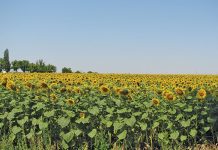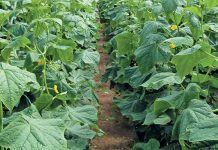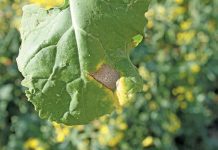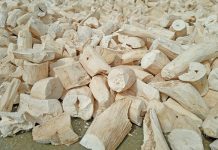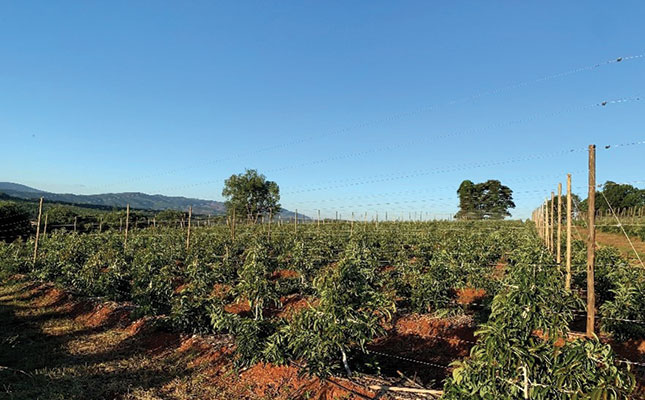
Photo: Zander Ernst
“Farmers face various challenges, but it’s our problem-solving ideas and techniques that allow us to improve and overcome many of these hurdles,” says Zander Ernst, director of marketing and production at the family-owned Allesbeste Boerdery in Tzaneen, Limpopo.
Avocados are highly susceptible to root rot caused by pathogens of the Phytophthora genus, which thrive in poorly drained soil. To address this, many avocado farmers plant their orchards on mounds or ridges.
“Ridges address drainage and aeration challenges in clay-type soil in particular,” says Ernst.
“When making ridges, we can determine the soil composition, which gives us greater control over soil uniformity. On Allesbeste, with its poorly drained soil, ridges are the best solution, and when we use them in conjunction with perforated pipes and trenches into which access water can drain, we can manage the problem.
“A drawback of such a system, however, is that if the ridges are too high, it can be difficult to prune, spray and harvest the trees.”
He adds that if ridges are situated on steep slopes, they can cause severe erosion in high-rainfall areas and limit access to an orchard if not planned correctly.
Advancing the frontiers of farming
While the Ernst family has benefitted from planting their avocado trees on ridges, they wanted to broaden their production horizons. “To achieve more, we had to shift the boundaries to produce new outcomes,” says Ernst.
Due to the upright growth pattern of the high-yielding, semi-dwarfing Maluma cultivar, they thought it would be a perfect fit for their micro-management farming system.
“We evaluated our farming practices as well as the inherent characteristics of the Maluma to see what we could do differently to increase production. We also wanted to be accurate in our tasks, especially when it came to managing pruning branches to optimise yield per hectare.
“Our avocado production has grown over the past few years, but we realised that we needed to adjust [our practices] to move into a new bracket and change the paradigm as new cultivars are being developed.
“The new-generation cultivars are semi-dwarfing types that are very precocious and start producing in the first year. Planting them 8m x 4m or 7m x 3,5m apart wasn’t giving us a return on investment [ROI], especially since we were still faced with the alternate-bearing cycles associated with avocado production.
“The many advantages of higher-density planting include increasing efficiency of production, boosting ROI and improving the production capacity of the trees,” he says.
Reducing the time it takes to reach full crop potential is another benefit: “Why wait until the sixth or seventh year to reach full potential, when it can happen in the first or second year?”
High-density planting also helps to reduce sun damage, he explains. “Growers of other crops such as apples actually want sun on the fruit itself for colour and taste, but we have to prevent sunburn for better packout rates.”
A plan for pruning
Ernst was looking for a way to prune the trees, but just enough to rejuvenate them and allow the right amount of sunlight to penetrate the canopy without leaving the fruit vulnerable to sunburn.
With high-density orchards, the trees cannot be pruned in the same way as they would if they were planted on ridges, so he had to find new ways to open them up.
Improved pruning practices are key to boosting production, and since pruning is a critical aspect of trellising, he started experimenting with this system. With trellising, it is easy to visually identify those branches that require pruning.
“In most other fruit crops, trellising improves production, so we decided to investigate using trellising in avocado production,” he says.
“For the orchards to be successful, we needed to understand the trees and their complexities so that we could apply our micro-management principles to improve production and limit alternate bearing.”
The slack, willowy nature of the Maluma cultivar’s branches allows for an entirely new production practice in the avocado industry. Through trellising, the group hoped to improve productivity, post-harvest benefits and fruit quality, similar to what some of the world’s highest-density apple and citrus farms are achieving.
The Maluma’s branches grow at 90° angles to its trunk, unlike varieties such as Hass, whose branches grow at angles of less than 45°. The Maluma also starts bearing fruit from as early as six months and is harvest-ready within 12 months of planting. As a result, young branches are pulled down and often break under the weight of the fruit.
In the 1970s, explains Ernst, apple farmers began researching and testing the use of trellises, and today, almost all apple orchards are planted using trellises. “We learnt a great deal from the apple-farming industry, and we’re now where they were in the 1970s.”
Since more frequent pruning is required for trellising, there is strong potential for growth vigour, which can negatively affect production.
Avocado trees produce fruit on terminal shoots, which decrease in number under rigorous pruning regimes, resulting in increased growth vigour and reduced production. The trees therefore cannot be put through an intense pruning regime, as this would encourage more vegetative growth. By cutting back only what is necessary, a balance can be created.
However, not all avocado cultivars are suited to trellising and the pruning that comes with it.
Ernst believes that, because dwarfing and semi-dwarfing avocado cultivars need support systems due to their precociousness, they are best suited to trellising, and this is the way forward for Allesbeste.
Trials and training
In 2015, Ernst ran his first trial of the trellis system on a block of 30 two-year-old avocado trees. After the first season, he decided not to waste any more time before measuring commercial results, so he expanded the trial into a commercial-size block.
His plan was to have 29ha of trellised avocado trees in production by 2021. Today, Allesbeste has 32ha of trellised avocado orchards.
“The training system we use with our trellises enables maximum sunlight interception, higher yields and improved fruit quality. It also gives the workers easier access to the trees.”
The training of fruit trees on trellises starts at planting and is done through the planting of the correct densities, the appropriate pruning, and branch manipulation. According to Ernst, the trees should be approximately 1m tall at the start.
Training helps to develop strong tree architecture that can support crop loads and promote precocity.
“We’ve opted to develop Tatura (Y-shaped) and vertical trellising systems on a 50:50 basis to determine in time which is more beneficial. Both are already showing advantages,” he adds.
“I think we still have more to learn in this regard. We’re also conducting research on wire spacing and angles, and based on the results, we’ll adapt our methods accordingly.”
At present, Ernst is planting trellises at a density of 1 250 trees/ha, with trees spaced 4m x 2m apart.
He uses a low-flow drip irrigation system at a flow rate of 1ℓ/hour. There are two irrigation lines in each row, one on either side of the trees, 500mm from the trunks. The drippers are at 500mm intervals along the lines.
Ernst has found that even with the increased production under the trellis system, Allesbeste is using less water per kilogram of fruit produced.
“We’re now able to produce more with less water, and in a country known for its irregular rainfall, this is the way forward for sustainable avocado production,” he says.
The results of the first experiment have been positive, with a doubling of flowering, a stable volume output, and packouts of exportable fruit rising by 20%.
“We’re happy with the results achieved thus far. Sunlight is reaching the trees’ trunks, and we’ve also found more flowering on the branches. When the Maluma starts to bear fruit, the fruit tends to weigh the branches down. As a result, we have to pull the branches up, and have found that the horizontal spread increases the critical fruit weight.”
Lessons learnt
Ernst cautions that moving from traditional avocado cultivation to trellises requires long-term effort, and many variables need to be taken into account when considering this production system.
The initial cost of setting up trellises is high, at 10% to 20% more than what it takes to establish a traditional orchard. It is also a labour-intensive activity, which adds to the cost. In Ernst’s opinion, however, the most expensive component is the wire.
“Nonetheless, after a couple of years of trials, it’s clear that the benefits far outweigh
the cost. Besides, we reached the break-even point after two or three years. In traditional avocado production, the break-even point is reached after five to seven years. And since we’re pruning more scientifically and intensively, we’ve also addressed the issue of alternate bearing.
“In most of our trials, we found that we achieved a yield almost three times higher than that of a new orchard established under conventional production methods.”
According to him, cultivar selection is crucial to the success of a trellising system, as the growth characteristics, such as dwarfing, are fundamental. He says that because Allesbeste is in its infancy in terms of trellis production, he and his team still need to refine their techniques. However, it is encouraging to see such promising results so early on in their trials.
“You have to make a mind shift. Farming avocado on trellises is management-intensive, and you have to be prepared to do micro-management. In the past, farmers managed a farm, then an orchard and then a tree; but with this system, you’re managing tree branches and shoots.
“If micro-management is not part of your vision, then farming avocado on trellises might not be for you,” he advises.
Proper soil preparation and management, in combination with water management and advanced irrigation practices, have already created major advantages for avocado farming. Ernst says that trellising could be the next step towards the further advancement of the sector.
Phone Allesbeste Boerdery on 015 307 3076.


